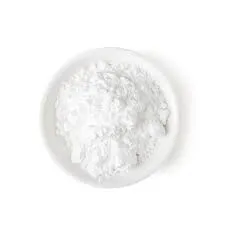Understanding Cooling Tower Water Treatment Chemicals
Cooling towers play an essential role in industrial and commercial facilities by dissipating excess heat generated during various processes. However, without proper maintenance, these systems can face numerous challenges, including scale formation, corrosion, and biological contamination. To mitigate these issues, effective water treatment is critical. Cooling tower water treatment chemicals are specially formulated to enhance the efficiency and longevity of cooling systems.
The Importance of Water Treatment in Cooling Towers
Cooling tower water is continuously cycled to dissipate heat, leading to natural evaporation and concentration of dissolved solids. Over time, this can result in severe problems. For instance, scale buildup can reduce the heat exchange efficiency and increase energy costs. Corrosion can lead to equipment failure and costly downtime, while biological growth, like algae and bacteria, can clog systems and lead to health risks.
Key Categories of Cooling Tower Water Treatment Chemicals
1. Scale Inhibitors These chemicals prevent the formation of scale deposits in the cooling water system. Common scale inhibitors include phosphonates and polymeric dispersants. They work by interfering with the crystallization process of minerals like calcium carbonate, keeping them in a soluble form, which prevents accumulation on heat exchange surfaces.
cooling tower water treatment chemicals

2. Corrosion Inhibitors To tackle corrosion, various inhibitors are used, such as azoles, phosphates, and molybdates. They create a protective film on metal surfaces, reducing the rate of oxidation and prolonging the life of cooling system components. The choice of corrosion inhibitor often depends on the materials used in the cooling system as well as the water chemistry.
3. Biocides Biocides are essential for controlling biological growth in cooling towers. They can be classified as oxidizing (like chlorine or bromine) or non-oxidizing (like isothiazolone or quaternary ammonium compounds). Regular biocide dosing is crucial for preventing slime, which can hinder water flow and promote pathogens.
4. pH Adjusters Maintaining proper pH levels is vital for the effectiveness of both scale and corrosion inhibitors. Common pH adjusters include acids like sulfuric acid or bases like sodium hydroxide. Keeping pH within the optimal range (usually between 6.5 to 8.5) ensures that other treatment chemicals can function effectively.
5. Antifoams and Defoamers These chemicals help manage foaming in cooling systems, which can lead to water loss and operational inefficiencies. By reducing surface tension, antifoams help maintain system integrity and efficiency.
Conclusion
In conclusion, the effectiveness of cooling towers hinges significantly on proper water treatment. Utilizing the right combination of cooling tower water treatment chemicals can help prevent scale, corrosion, and biological growth, ensuring operational efficiency and minimizing costs. Regular monitoring and adjustment of chemical treatment programs are crucial to adapt to changing conditions, ultimately leading to improved system performance and reduced environmental impact. As industries continue to prioritize sustainability and efficiency, the role of these chemicals in maintaining cooling tower operations will only become more critical.

